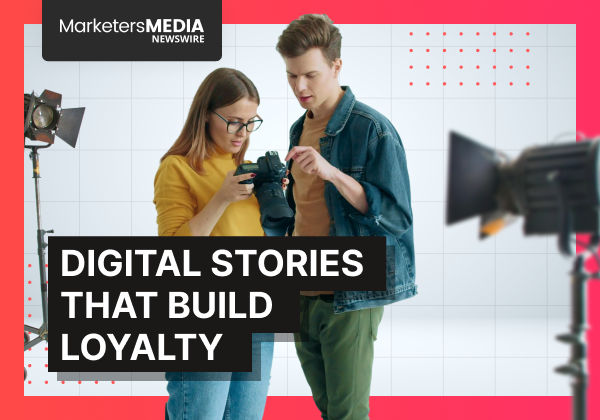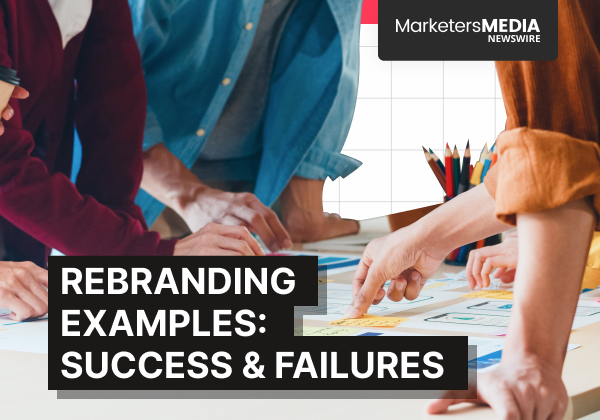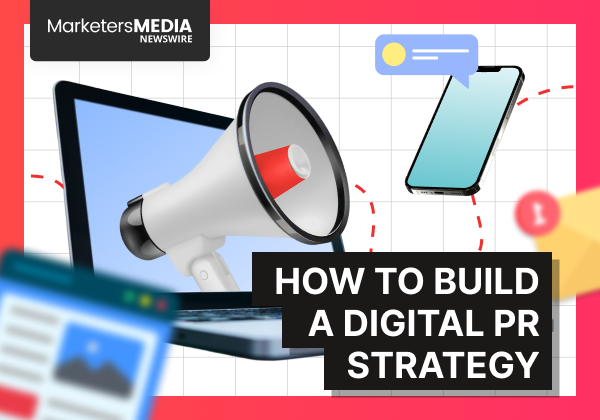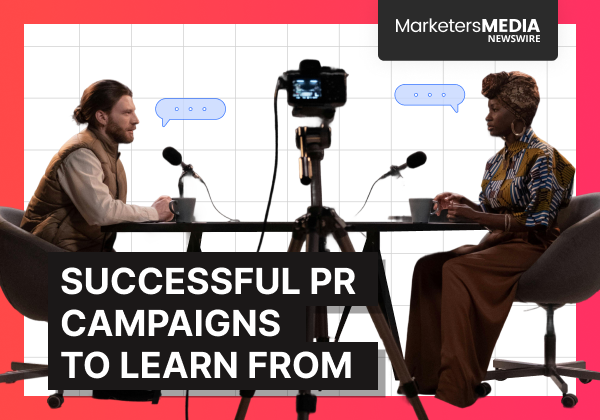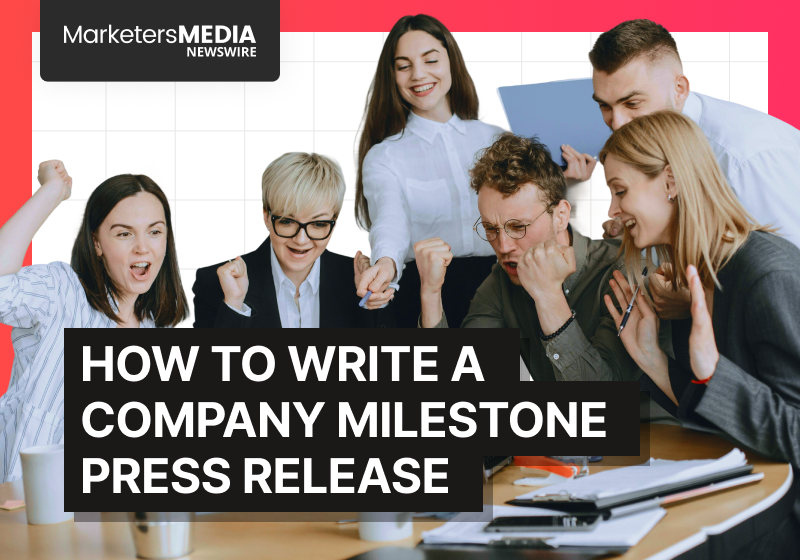Human attention span: 12 seconds in 2000. Just 8 seconds by 2025.
Two companies sell identical products. One publishes a feature list. The other creates an interactive story with real customer outcomes. Which converts?
The answer shows up in the data—and it's not close.
What Is Digital Storytelling
Digital storytelling uses technology and multimedia to bring narratives to life on the web.
Words combine with images, video clips, audio, infographics, data visualizations, and interactive maps. Each element serves the narrative.
The format responds to different screen sizes. A story that works on desktop adapts seamlessly to mobile without losing impact.
Organizations that adopt digital storytelling consistently exceed performance targets—improved time-on-page, better exit rates, and sustained organic traffic that brings new users months after publication. Those numbers reflect real engagement, not vanity metrics.
Techniques That Make Digital Stories Work
Scrollytelling uses scroll-based animation to reveal content as users move down the page. Visuals layer in. Text appears at the right moment. The story unfolds naturally through the user's own action.
Customer-generated stories let your audience tell their experiences. Authenticity builds trust faster than any branded message. When real people share real outcomes, potential customers see themselves in those stories.
Data-focused campaigns transform statistics into compelling narratives. Charts and graphs become part of the story rather than interrupting it. Numbers gain context. Impact becomes visible.

Interactive experiences invite participation through quizzes, polls, or immersive journeys using VR and AR. Museums use AR to display digital versions of artists next to their work or add context to exhibits. The technology is affordable now—most visitors already carry the required device.
Visual narratives lead with compelling imagery. High-resolution photography, GIFs, and illustrations carry the story forward. Text supports rather than dominates.
Audio content offers a different dimension. Podcasts and behind-the-scenes audio create intimacy. People hear emotion in voices that text can't convey.
Why Brands Invest in Digital Storytelling
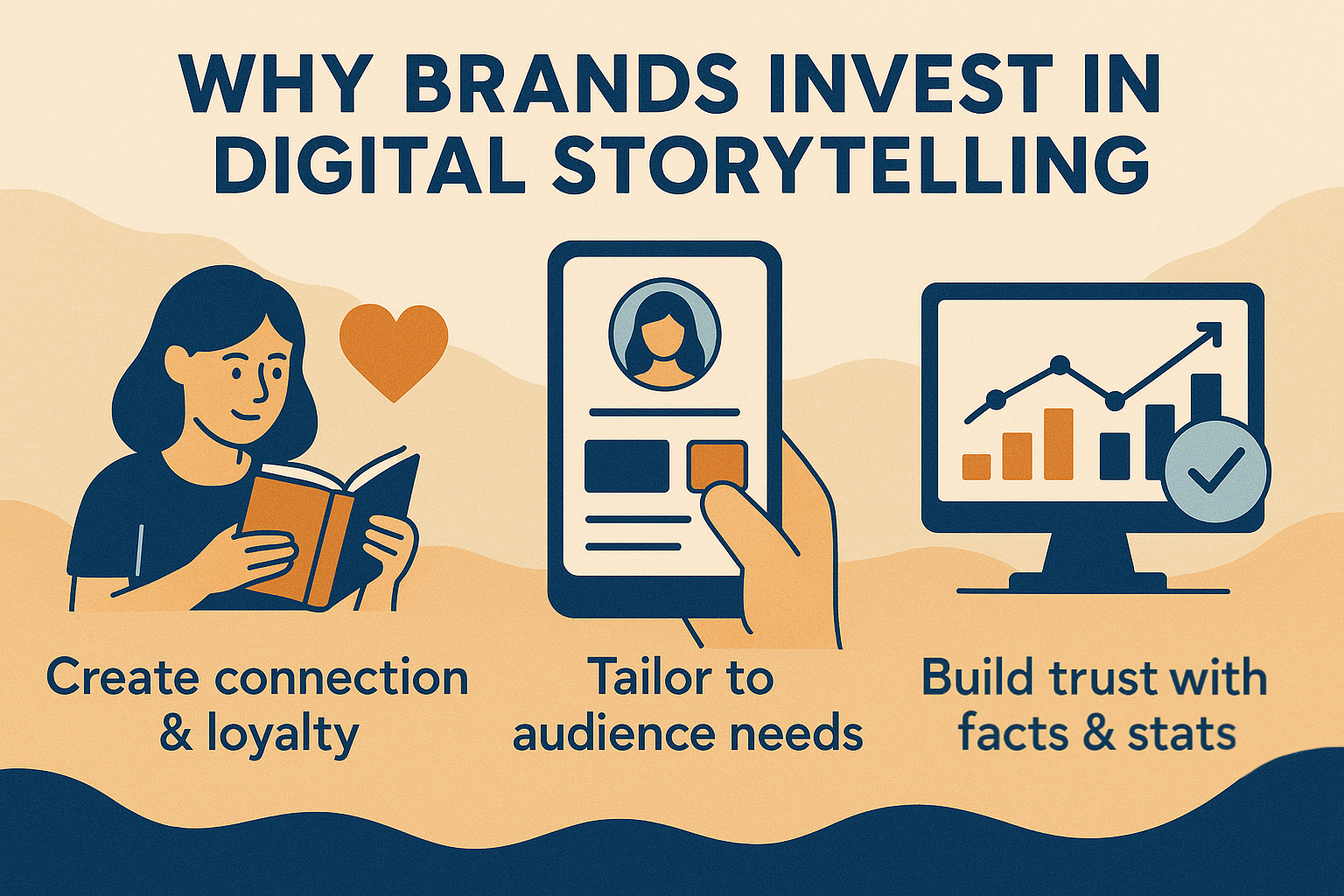
Stories create emotional bonds that enhance retention and build loyalty. In a market saturated with aggressive advertising, this emotional connection helps organizations stand out and prove dedication to their mission beyond just selling products.
That connection deepens through personalization. Campaigns adapt core narratives to resonate with each demographic's specific concerns and aspirations. A story targeting enterprise buyers emphasizes different pain points than one aimed at individual consumers—same brand, tailored relevance.
Data integration builds credibility. When stories include verifiable statistics and transparent sources, audiences trust the message. That trust translates to measurable business outcomes you can track and optimize over time.
Look at what happens when brands get it right.
Real Digital Storytelling Examples
Petronas: Festive Campaigns
Malaysian oil company Petronas built a two-decade tradition of heartwarming festive ads. Campaigns like "Nobody's Child" focused on family reunion dinners during Chinese New Year.
The storytelling works because it doesn't feel like advertising—simple narratives about real cultural moments that resonate emotionally.
Dove: Real Beauty Sketches
An FBI-trained forensic artist drew women twice—once based on self-descriptions, once based on stranger descriptions. The stranger's sketch was always more flattering.
The 2013 video hit 180 million views. Sales jumped from $2 billion to $4 billion in three years. Media exposure was worth 30 times the paid spend.
Spotify: Wrapped
Spotify turns user data into shareable personal stories each year. Every listener gets a unique narrative about their habits while participating in a shared cultural moment. Users eagerly share results across platforms, generating organic reach while reinforcing brand loyalty.
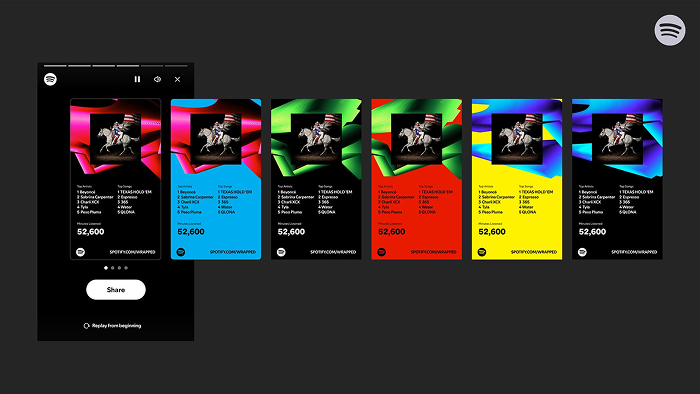
Google: Year in Search
Google's annual Year in Search campaign has been a tradition since 2010. Each December, the company compiles the year's most-searched topics into an emotional film.
The 2024 edition generated 765 million video views across platforms—the most-viewed Year in Search yet and Google's most positive brand moment of the year. The formula consistently works: transform search data into narratives with clear arcs from difficulty to hope.
Faroe Islands: Sheep View 360
Frustrated by the lack of Google Street View coverage, the Faroe Islands tourism board strapped 360-degree cameras to sheep. The $200,000 campaign generated 2 billion media impressions and an estimated $50 million in PR value.
Google took notice within two months and sent a team to officially map the islands. Tourism increased 30% over four years. The campaign won top Travel & Tourism awards because it demonstrated genuine creativity solving a real problem while sharing the islands' natural beauty.
SAP: Unstoppable
SAP used high-concept metaphors and cinematic visuals for B2B storytelling. Real customer challenges dramatized in bold ways. The campaign outperformed industry benchmarks and earned a Cannes Lions shortlist, proving emotional storytelling works in enterprise marketing.
Schneider Electric: Unsung Heroes
Schneider Electric positioned IT professionals as "unsung heroes" and used AI-driven insights to personalize messaging across retail, finance, education, manufacturing, and healthcare sectors. The coordinated approach exceeded growth targets while increasing engagement rates.
These campaigns succeeded because they followed specific principles. Here's how to apply them.
Digital Storytelling Best Practices
Storyboard before you produce. Map the flow and organize shot selection. Modern AI tools like Boords can generate images to streamline this process.
Show, don't tell. Let engaging visuals and audio cues guide the audience to their own conclusions. Over-explanation kills engagement.
Keep it brief. Successful ad campaigns run under a minute. Focused stories create powerful impact quickly.
Maintain consistency. Avoid jarring transitions. Following an emotional narrative with an overt sales pitch feels like bait-and-switch.
Choose the right tool. Research platforms that specialize in the type of story you want to tell—whether short visual-driven content or interactive data visualization. Match the tool to your story type and technical capabilities.
Align with brand values. Include the owner's origins, life events that influenced their path, and key moments in business development. These details build trust and prove dedication to mission beyond profit.
But implementation without measurement is guesswork.
How to Measure Digital Storytelling Performance
Track beyond vanity metrics. Follower counts don't pay bills. Focus on conversion rates (digital storytelling can boost these by up to 30%), cost per acquisition, and customer lifetime value.
Use unique tracking codes. Personalized content with dynamic tracking reveals which story elements drive results. Local language adaptation, currency customization, and strategic follow-up timing all contribute to higher conversions.
Monitor time on page and dwell time. These metrics show whether your story holds attention. Higher numbers indicate stronger engagement with the narrative.
Analyze sentiment across platforms. Social listening tools reveal how audiences truly respond beyond media coverage. Quick reaction prevents potential backlash.
Measure long-term value. Customer retention rate, Net Promoter Score, and Customer Loyalty Index indicate whether stories build lasting relationships or generate one-time clicks.
For educational or cultural applications, adjust metrics accordingly. Improvements in critical thinking or learning motivation matter more than immediate sales in these contexts.
Wrapping It Up
Digital storytelling addresses a fundamental challenge: capturing attention in a saturated market.
The brands that succeed combine authentic narrative with strategic technology use. They measure results rigorously, and adapt based on data.
You don't need a massive budget or a creative agency to start. Pick one piece of content. Add visuals. Tell a story. Measure the results. The same storytelling techniques work across formats—from long-form brand campaigns to multimedia press releases that turn announcements into narratives.
Then do it again. That's how brands win attention.
Frequently Asked Questions (FAQ)
Q: Why should I use Augmented Reality (AR) instead of Virtual Reality (VR) for new storytelling projects?
A: You should choose Augmented Reality (AR) because it is a low-cost alternative to VR. AR is significantly more affordable to develop and relies on devices most visitors already own, such as smartphones, which eliminates the high expense of buying specialized headsets and controllers for Virtual Reality (VR).
Q: How can I measure the long-term Return on Investment (ROI) of a brand story beyond simple views?
A: To measure long-term ROI, you must track indicators beyond vanity metrics. Key long-term metrics include Customer Lifetime Value (CLV), Customer Retention Rate, and Net Promoter Score (NPS). For non-sales objectives (like education or therapy), success is measured by improvements in critical thinking or learning motivation.
Q: How can a high-investment, long-form digital story (like a scrollytelling article) be reused efficiently?
A: A resource-efficient method is content retargeting. This involves identifying the long-form content's narrative beats (fundamental storytelling units) and extracting those visual and textual elements to create cohesive, short-form videos for high-volume platforms like social media.
Q: What are the main ethical risks of using hyper-personalization in digital storytelling?
A: The main risk is "over-personalization," which relies heavily on data collection and can be perceived as invasive or manipulative, ultimately eroding brand trust. A robust ethical framework requires transparency about data handling and ensuring informed consent to mitigate this risk.
Q: What is the biggest challenge in non-linear digital storytelling, and how is it managed?
A: The primary challenge is maintaining narrative structure and voice consistency across disparate digital platforms, which often leads to a disjointed user experience. This challenge is managed by developing a style guide, curating core content internally, and ensuring all efforts (social media, video, etc.) align into a single, cohesive content marketing strategy.
Free Press Release Template
Tell us where to send your PDF:
